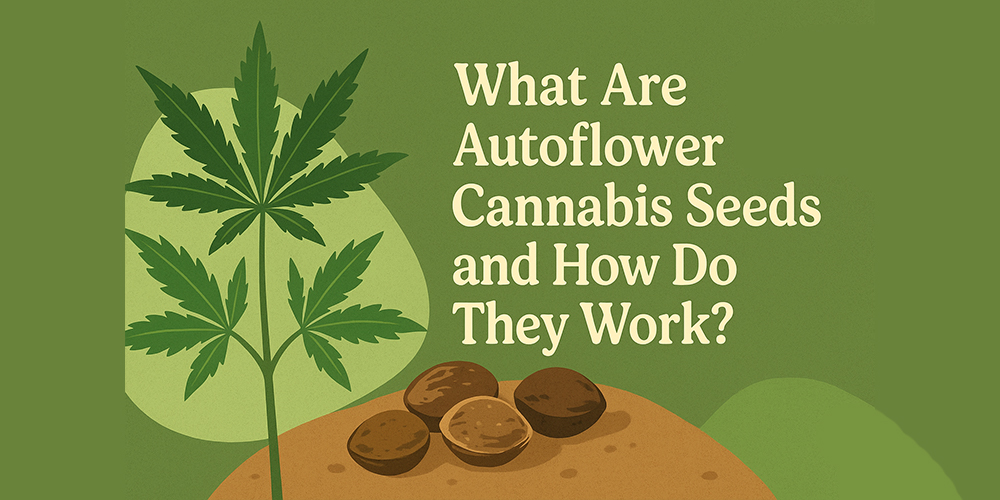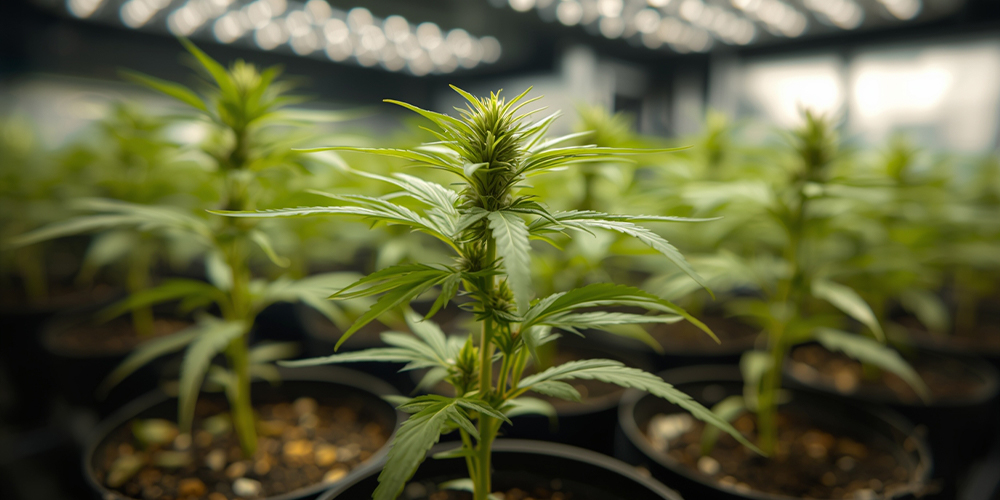
Home » What Are Autoflower Cannabis Seeds and How Do They Work?
What Are Autoflower Cannabis Seeds and How Do They Work?
Autoflower cannabis seeds have transformed modern cannabis cultivation by making it faster, simpler, and more accessible than ever before. Unlike traditional strains that require careful light management to trigger flowering, autoflower seeds are designed to bloom automatically after a set amount of time. This innovation, powered by genetics from Cannabis ruderalis, has made growing cannabis easier for beginners and more efficient for experienced cultivators.
In this guide, we’ll explain what autoflower seeds are, how they work, their benefits and trade-offs, and provide a step-by-step guide to growing them successfully. Whether you’re exploring cannabis cultivation for the first time or looking to refine your methods, this 2025 update delivers the clarity and practical insights you need.
What Are Autoflower Cannabis Seeds?
Autoflower cannabis seeds are a type of cannabis that begins flowering automatically after a certain period—usually 2–4 weeks—regardless of light exposure. This differs from photoperiod cannabis seeds, which rely on specific light cycles (e.g., 12 hours of darkness) to trigger flowering.
The key to autoflowering lies in their genetic heritage: breeders combined Cannabis ruderalis, a hardy species native to northern climates with extreme daylight variations, with traditional indica and sativa strains. The result is a hybrid that flowers by age rather than light cycle.

How Do Autoflower Seeds Work?
The Science Behind Autoflowering
Cannabis ruderalis evolved in regions with long summer days and short growing seasons. To survive, it developed the ability to flower based on maturity rather than light cues. When breeders introduced these traits into popular indica and sativa strains, they created seeds that reliably flower regardless of light exposure.
Breeding & Modern Autoflowers
Early autoflowering strains were criticized for being low in potency and yield. However, modern breeding programs have dramatically improved quality. Today’s autoflowers can rival photoperiod strains in flavor, THC content, and resilience, while maintaining their hallmark speed and convenience.
Key Benefits of Autoflower Cannabis Seeds
Faster Harvests
Most autoflowers progress from seed to harvest in just 8–12 weeks, allowing multiple harvests in a single year.
Compact and Stealth-Friendly
Autoflowers tend to remain smaller (40–100 cm), making them ideal for discreet indoor setups or outdoor spaces with privacy concerns.
Beginner-Friendly
They require less training and fewer adjustments, making them a favorite for new growers. Since flowering happens automatically, beginners don’t need to manipulate light schedules.
Multiple Harvests Per Year
Because of their rapid lifecycle, growers can stagger plantings to produce a steady supply year-round in suitable conditions.
Key Takeaway: Autoflowers are fast, easy, and discreet — perfect for growers seeking simplicity.
Limitations and Trade-Offs
Smaller Yields
Autoflowers usually produce less bud compared to photoperiod plants, as they have shorter vegetative stages.
Potentially Lower Potency
While modern autoflowers have improved, some strains may still be slightly less potent than their photoperiod counterparts.
Fixed Lifecycle
Autoflowers cannot be extended by manipulating light cycles. If the plant suffers stress early on, it has little time to recover before flowering begins.
⚠️ Caution: Autoflowers are not ideal for growers who want maximum yields, heavy plant training, or extended growing seasons.
Growing Autoflowers Successfully – Step-by-Step
1. Choosing the Right Seeds
Look for feminized autoflower seeds to ensure that nearly all plants will flower as females (bud producers).
Not sure which genetics to pick? Explore our guide to the Best Autoflower Cannabis Seeds in 2025 for strains that deliver strong yields, fast growth, and resilience.
2. Light Schedules
While autoflowers don’t need strict light cycles, most growers use 18–20 hours of light daily to maximize growth.
3. Soil, Nutrients & Watering
- Light, airy soil promotes root health.
- Use nutrients formulated for cannabis, but avoid overfeeding—autoflowers are sensitive to nutrient burn.
- Maintain consistent watering; avoid waterlogging.
4. Climate Considerations
- Indoors: Stable temperatures between 20–26°C are ideal.
- Outdoors: Plant in spring or early summer to take advantage of natural sunlight.
If you’re still deciding on the best setup for your grow, our comparison of Indoor vs Outdoor Cannabis Seeds: Which Is Better? can help you match seed choice with your environment.
5. Common Mistakes to Avoid
- Transplanting late (can stress plants during their short veg phase).
- Overfeeding with nitrogen during flowering.
- Overtraining (LST is fine, but avoid topping).
💡 Pro Tip: Autoflowers thrive with minimal interference—set them up correctly, then let them do the work.
Autoflower vs Photoperiod Seeds (Comparison)
| Feature | Autoflower Seeds | Photoperiod Seeds |
| Time to Harvest | 8–12 weeks | 4–6 months (depending on veg stage) |
| Light Requirements | 18–20 hrs (no strict cycle) | Requires 12 hrs dark to flower |
| Size | Small & compact | Can grow large if vegged longer |
| Yields | Moderate (smaller overall) | Higher potential yields |
| Potency | Improving, may be slightly lower | Often higher (strain-dependent) |
| Training Potential | Limited (fast growth cycle) | High (can extend veg stage) |
| Best For | Beginners, fast crops, stealth grows | Experienced growers, maximum yields |
Conclusion
Autoflower cannabis seeds have revolutionized cultivation by making it faster, simpler, and more discreet. With their ability to flower automatically, compact size, and short growing cycle, they are an excellent choice for beginners and growers seeking multiple harvests in a year.
However, they come with trade-offs—smaller yields, fixed lifecycles, and limited training potential. For those who value simplicity and speed over maximum output, autoflowers are a game-changer. And as breeding advances continue into 2025, the potency and yield of autoflowers will only keep improving.
FAQs
Q1: What makes autoflowers different from feminized seeds?
Autoflowers can also be feminized, but their main difference is flowering based on age rather than light cycle.
Q2: How long do autoflowers take from seed to harvest?
Typically 8–12 weeks, depending on strain.
Q3: Do autoflowers need darkness?
No, they thrive under 18–20 hours of light daily.

